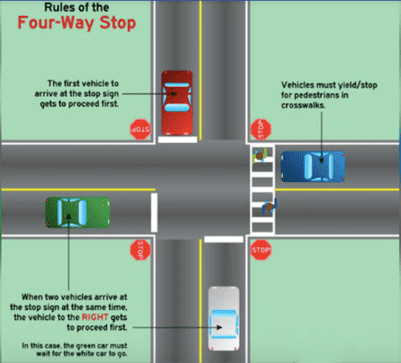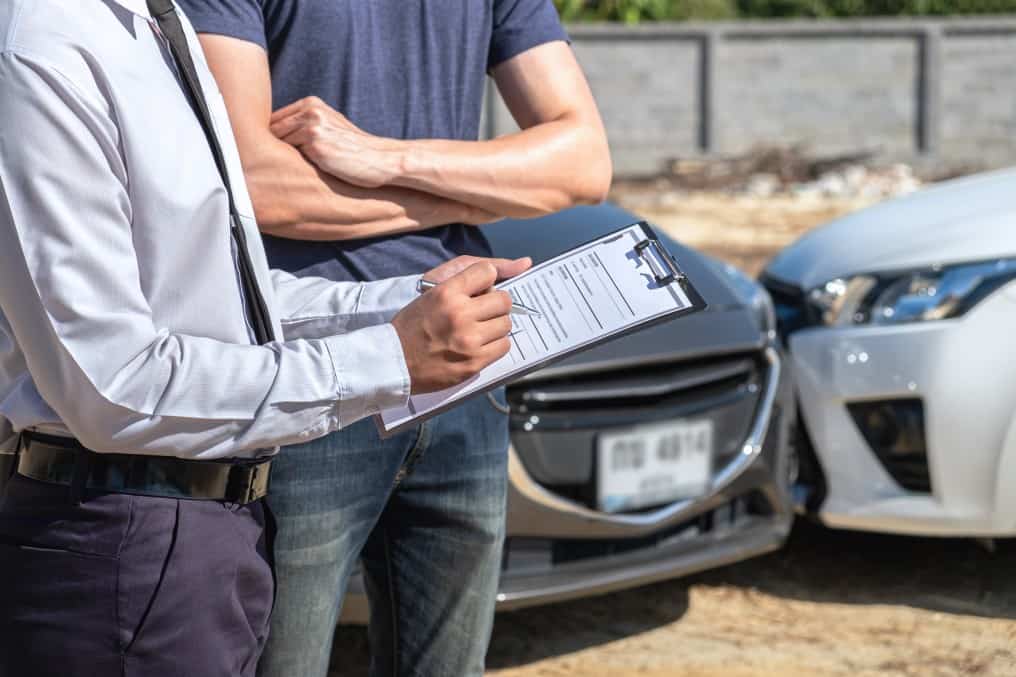Posted At: Oct 06, 2023 - 545 Views

In part two of our series on determining fault, we look at some common types of accidents and why the person who seems to be at fault, may not be.
Let’s look at how fault is determined in some of the most common types of auto accidents:
1. Stop-Sign Accidents
In most cases, the driver without the right of way will be responsible.
Two-Way Stop Signs
According to Arizona Vehicle Code 22450 VC, drivers approaching stop signs must stop at the limit line. If there is no line, they must stop before entering the crosswalk, near the side of the intersection, or right before the beginning of the intersecting roadway. In either case, rolling stops are not permissible.
Four-Way Stop Signs
All drivers approaching a four-way stop sign must come to a complete halt.
Who has the right of way usually depends on the order of arrival: The first driver who stops is the first to proceed through the intersection.
However, if the drivers arrive at the same time, the one on the right has the right of way. If both are driving straight through the intersection, they may proceed simultaneously as there’s no risk of collision. If one driver wants to turn left, and the other plans to turn right, the one turning right has the right of way.

2. Accidents because of Poor Signaling
Generally, the driver who failed to signal properly is at fault. Most accidents of this type occur when a driver doesn’t signal a turn and is hit by an oncoming car or another vehicle from behind.
That said, there are some little-known exceptions to the rule. Imagine a situation in which Driver A plans to turn left. An oncoming Driver B wrongly signals that they will turn right but drives straight. As a result, Driver B turns left and crashes into Driver A. In this scenario, driver B will most likely be at fault as well, especially if they were facing a stop sign.
3. Turn Accidents
Right Turns
With Arizona being a pure comparative negligence state, both drivers will usually share the responsibility for a right-turn accident. However, if a driver who did not have the right of way made a right turn and rear-ended another vehicle, they may be 100% at fault.
Left Turns
If you’re turning left, you only have the right of way if there’s a left-turn green arrow.
If you’re approaching a green light with no arrow, you must yield until the roadway is clear or the oncoming vehicles are far enough to make a safe turn. You must also yield to crossing pedestrians and cyclists. The same rules apply when turning left at an intersection with no traffic light.
Because drivers who turn left rarely have the right of way, there is a common assumption that they are at fault. While that may be true in most cases, it is not always so, and there’s no automatic presumption of fault.
You may only be partially liable for the accident–or not at all–if:
- You believed you could make the turn safely when an oncoming speeding vehicle entered the intersection, approaching you much more quickly than you could reasonably anticipate.
- You were making a left-hand turn when an oncoming vehicle ran a red light or stop sign.
- The conditions were safe to proceed when you turned left, but an unexpected circumstance caused you to slow, stop, or swerve.
- The other driver was impaired, such as when driving while texting, under the influence of alcohol or drugs, or without a valid license.
4. Rear-End Collisions
The tailing driver is commonly at fault in most rear-collision accidents. This is usually due to speeding, tailgating, driving while impaired, or not paying enough attention.
In some cases, however, the lead driver may be the responsible party, such as when:
- Failing to use turn signals
- Suddenly reversing direction
- Having defective brake lights
- Failing to yield the right of way
- Forgetting the car was in reverse
- Pulling out directly in front of another vehicle
5. Side-Impact Collisions
Side-impact collisions, also known as T-Bone or broadside crashes, often occur at intersections. Usually, the driver who did not have the right of way will be liable.
However, there are exceptions, such as when the other driver:
- Enters the intersection illegally
- Runs a red light or rolls through a stop sign
- Drives recklessly or under the influence
- Is otherwise impaired
FAQs
Here are the answers to questions our clients often ask in traffic accident cases:

How Do You Determine Who Is at Fault in a Car Accident?
Arizona car accident fault determination rules state that a driver must be proven negligent to be held liable.
To prove negligence under common law, you must show that the driver failed to operate their vehicle in a reasonably safe manner, thereby causing the accident. To prove statutory negligence, you must only show that a driver violated a statute or code such as the Arizona Vehicle Code.
How Do Insurance Companies Determine Fault?
Insurance providers will look at evidence such as:
- Photos and videos of the collision scene
- Witness statements
- Medical records
- Bills, receipts, and other documents showing lost wages, property damages, medical expenses, and other costs
- Testimony from experts in medicine, biomechanics, occupational retraining, accident reconstruction, and more
Can Car Damage Determine Fault?
Car damage can play an important role in traffic accident fault determination. However, it usually isn’t enough to establish liability on its own. Investigators will normally consider the entire scene, traffic safety rules, the drivers’ conduct, documentary evidence, and more to make a determination.
Some states adopt a “modified” approach to comparative negligence, where plaintiffs can’t recover if they are 50% at fault or more. In contrast, Arizona subscribes to a “pure” comparative negligence approach that allows you to recover even if you’re 99% at fault.
How Long Does It Take for Insurance Companies to Determine Fault?
Under Arizona law, insurance providers have 40 days to investigate a claim. If they need more time, they must notify you every 30 days. Once they reach a determination and all parties agree to it, they must make payment within 30 days.
You’ve Had an Accident–What’s Next?
Traffic accident fault determination can be complicated. There are many exceptions to the rules, and a lot will turn on the unique circumstances of each case.
That’s why, if you or a loved one has been injured because of another driver’s negligence, you should contact a specialist accident attorney right away.
They can advise you on how best to defend your case and maximize your insurance payout. Remember, you may be able to recover even if you’re more than 50% at fault.
